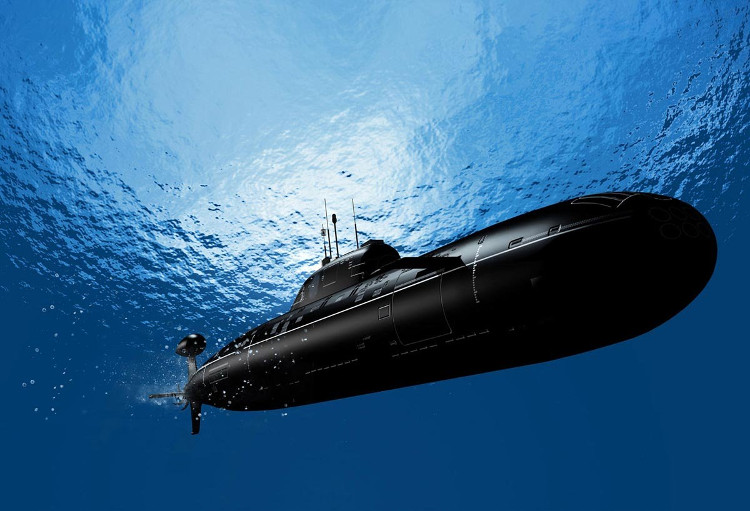How the submarine dives and floats to the surface
Submarines can dive deep into the sea or float up by pumping water or air into the internal compartments to change its weight.
According to We are the mighty, ships can float on the water because of the weight of water it occupies the weight of the ship. Gravity pulls the ship down, but the water forces Archimedes upwards in the opposite direction, helping the ship not sink.

Submarines float or dive into the water thanks to ballast tanks.(Photo: Tumblr).
Submarines use ballast tanks filled with air or water to dive and float. When submarines float on water, ballast tanks filled with air make the density of ships smaller than the surrounding water. If the ballast tanks are filled with water, the density of the vessel is larger than the water so it sinks.
Some submarines use two different shells to replace the function of ballast tanks. This design allows to submerge the outer shell with water, causing the ship to sink. The living and working place of the crew in the inner class.
According to Foxtrot Alpha, the example of double hull design is Russia's Alfa class submarine. They were created in the 1960s, have the fastest speed compared to the same submarines to this day.
- The new information system keeps the submarine in safe contact
- The 'submarine' of the United States
- 17 submarine and one-man submarine surprises you
- Stingray ray submarine
- The truth about Chinese submarine technology
- Submarine K-27 - Soviet
- The first one to conquer the deepest point in every ocean
- The historical secret of the world's first submarine
- The Nereus submarine exploded at a depth of 10,000m
- German submarine explosion: Mysteriously challenging the maritime industry for nearly 100 years
- New personal submarine
- HMS Artful - World's largest nuclear submarine
 'Fine laughs' - Scary and painful torture in ancient times
'Fine laughs' - Scary and painful torture in ancient times The sequence of numbers 142857 of the Egyptian pyramids is known as the strangest number in the world - Why?
The sequence of numbers 142857 of the Egyptian pyramids is known as the strangest number in the world - Why? History of the iron
History of the iron What is alum?
What is alum? How do marine animals drink filtered water?
How do marine animals drink filtered water?  Discover the secret of the water buffalo
Discover the secret of the water buffalo  Shocking discovery about the Earth's 'tail'
Shocking discovery about the Earth's 'tail'  Top 10 Unbelievable Ways Animals Survive in Dangerous Environments
Top 10 Unbelievable Ways Animals Survive in Dangerous Environments  Mysterious wonders of the world
Mysterious wonders of the world  The largest animals that lived in the desert, still exist today
The largest animals that lived in the desert, still exist today 